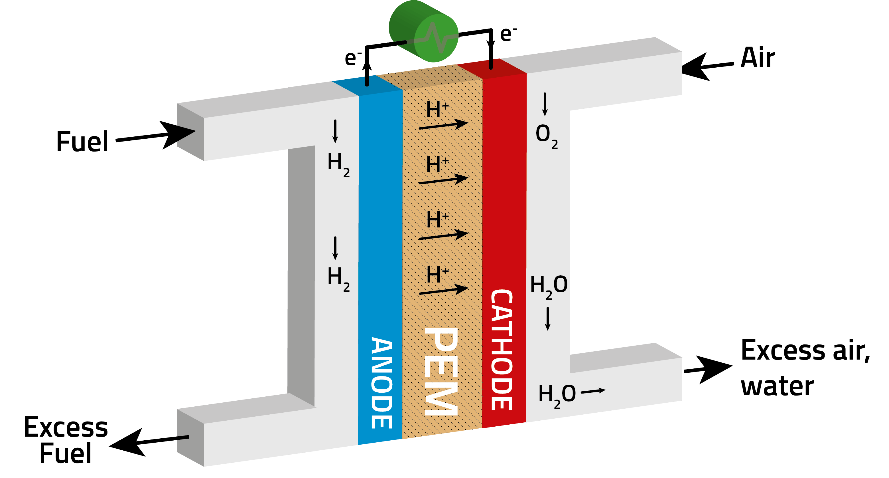Many groups of researchers come to ISIS each year to study materials relevant to the hydrogen economy. This is because the unique way that neutrons interact with matter make them a very useful tool for studying small atoms like hydrogen in a material that contains heavier atoms.
For hydrogen to become widespread as an energy vector, materials required to make its production, storage and use more efficient are needed.
Production
Combining water and methane is currently the most common industrial method of producing hydrogen, and uses nickel supported on an alumina catalyst. Another method of converting methane to hydrogen actually uses carbon dioxide rather than producing it - this is known as dry reforming.
Many inelastic neutron scattering (INS) experiments have been carried out at ISIS on catalysts used in dry reforming, to investigate the layer that forms over the catalyst and causes it to deteriorate. The INS experiments have provided a novel way to investigate the way these catalysts deactivate, which could be used further in both these reactions and also other processes where the same type of deactivation occurs. INS has also been used to investigate new types of catalyst that use copper rather than nickel.
Storage
Many different hydrogen storage systems have been studied at ISIS. Some involve the adsorption of hydrogen molecules in porous frameworks such as Metal Organic Frameworks (MOFs) or carbon-based structures. We interviewed three researchers who have used ISIS for their research on hydrogen storage, and you can watch that on our website.
Others have looked at metal hydride systems, where the hydrogen binds chemically to a metal and can then be released under different conditions when needed. A recent review paper summarises the different ways neutrons can be used to characterise solid state hydrogen storage materials.
These studies have also attracted the attention of industry, with the Toyota Central Research & Development Laboratories using both neutrons and muons at ISIS to study possible hydrogen storage materials.
“Our work with ISIS has allowed us to develop in operando neutron powder diffraction techniques that has provided important insights into the nature and location of hydrogen in Ti-V-Cr-Mo alloy for hydrogen storage systems. This in turn provides new opportunities for the rational improvement of these materials for use as storage for future hydrogen cars.”
Shin-ichi Towata, Toyota Central Research and Development Laboratories Inc
Use in fuel cells
Using a fuel cell to turn hydrogen and oxygen into water and energy is an efficient way to use hydrogen. Fuel cells all consist of an anode, a cathode, and an electrolyte that allows ions to move between the two sides of the fuel cell (schematic shown below). Catalysts are required for both the anode and the cathode, and have been subject to many neutron studies at ISIS.

Both inelastic neutron scattering and quasi-elastic neutron scattering have been used to study catalysts used in hydrogen fuel cells. By studying the interaction of hydrogen ions with the catalyst, researchers can develop better catalysts, leading to more efficient fuel cells.
As well as studying the catalysts, researchers have also used ISIS to develop new materials for the fuel cell components themselves, and investigated new methods for how they can be produced.
A recent review paper also highlights the use of neutron techniques for studying the membrane present in fuel cells.
Other experiments
If hydrogen is to become a common energy vector in the UK, it is crucial for safety that accurate hydrogen sensors are commonly available. Researchers used ISIS to discover that the metal hafnium may be the perfect material for a hydrogen sensor.
In parallel with hydrogen technology, scientists at ISIS are also studying the feasibility of developing an ammonia economy. This work includes the design and build of a green ammonia plant, joint with Siemens, based at the Rutherford Appleton Lab.
